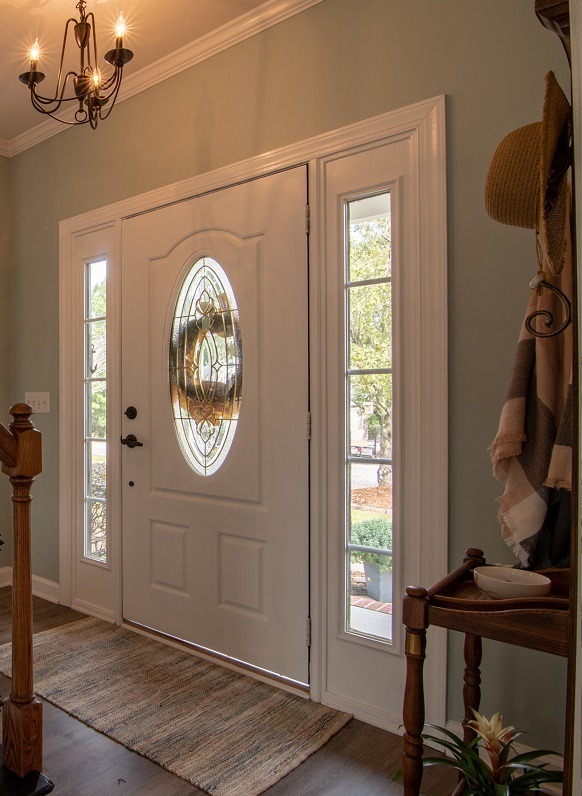
The U.S. housing market lifted sale prices to new highs in 2021. Remote work, which surged in 2020, really settled into accepted custom in 2021. Our new way of working became central to the way we choose our homes and the way live in them, and the results were unreal.
Other factors that made 2021 a wild time in real estate? Shortages of workers, supply chain issues, and swooning mortgage interest rates. Weather extremes, wildfires, sea level rise, and floods. Unequal distribution of wealth, exacerbated by the Covid effect.
One part of the population got through the year white-knuckled, as anxiety grew over what would happen when the mortgage payments became due after months of forbearance. Meanwhile, another swath of the population took profits from a rising stock market and a Bitcoin boom. They found themselves free to leave the cities and head for vacation homes. So, in the most desirable markets, the price gains for luxury homes were dramatic.
Readers who have followed the articles on Deeds.com had our analysis in real time, as all of these dynamics unfolded. Here, we take a look back at some remarkable real estate milestones of an unprecedented year, as it winds down to make way for 2022.
Most Noted Real Estate Happenings of 2021

U.S. home prices rose by double digits in 2021. Homeowners in many areas of the country built up equity at surprising rates. Longtime homeowners felt as though they got windfalls when selling to downsize. What’s been going on?
Covid 19 changed what most people do at home. And that meant new interest in different kinds of real estate, in different locations. As interest turned into real demand, the housing market emerged from the 2020 lockdowns with an unstoppable surge of power. A seller’s market took shape in 2020. By 2021, bidding contests had become oddly routine.
In this unprecedented market:
- Buyers were willing to pay above the listing prices for homes. Many were also willing to come up with cash, or waive contingencies, to win the homes they wanted. Amazingly, more than half of buyers were paying over the list price by spring 2021.
- In June, homes were selling for an average 2.6% over their asking prices, according to Redfin data. It was an all-time record.
- Home supply dropped in 2021, hitting an all-time low by June.
- Mortgage rates, on average, dipped to a rate of just 2.65% in January 2021. It was the lowest rate for a fixed, 30-year home loan in all the years since Freddie Mac started keeping track in 1971.
- Mortgage companies starting seeing more U.S. homeowners applying for the low-interest mortgages of 2021 to refinance rather than sell.
- In the spring and summer, most homes listed for sale went cycled in and out of the market in a whirlwind 15 days.
- Many buyers closed on their transactions remotely, without having toured the home except online. Thanks to advanced property technology and remote online notarization, well-informed real estate transactions became possible from a distance.
- Investor buyers bought over 18% of all U.S. homes sold in the third quarter of 2021. That one record-breaking factor itself made the housing market harder than ever for ordinary buyers.
- The well-known real estate company Zillow went full-speed-ahead buying and flipping homes — but then ditched the iBuying arena in 2021.
- Affluent professionals, employed by companies that had settled on remote or hybrid working situations, were buying up second homes.
- Since early 2020, Realtor.com median list prices have surged 27% — with a lot of variation by market and home type. Prices for affordable homes, according to Redfin’s data, went up about 13%, and average-priced homes rose 16%, while luxury homes went up in price more than 26% from 2020, hitting a median price of nearly a million dollars by summer 2021.
According to Redfin data, record numbers of home shoppers planned long-distance moves in 2021. Some were leaving the big, expensive coastal cities for relatively affordable metros. It was time, they felt, to jump on the low interest rates, go where they could get more space for the dollar, and attain the kind of amenities they’d long wished for. Let’s take a quick look at where these buyers went.
U.S. Real Estate Took a (Partly) Westward Turn
When Fortune magazine looked at information from the National Association of REALTORS®, it took note of a decidedly westward trend in rising home prices. Montana can boast a breathtaking 57% rise in home prices. Other western states that rose dramatically include Idaho, Nevada, and Utah.
Homeowners in Northeastern states tended to do well too. Homeowners in Maine saw their valuations go up by more than a third from early 2020 to now.
During 2021, California homeowners have increased their home equity by nearly $119,000, on average. Next in the top home equity stakes come Hawaii homes (up by an average of about $113K); followed by Washington state, Arizona, Utah, and Idaho. Average equity rises in all of those states topped $82K.
What about cities? According to research by the Urban Land Institute and the financial consulting firm PwC, the top draws in the western United States are now the Dallas-Fort Worth and Austin areas, and metro Phoenix. In the eastern United States, people are flocking to the Nashville metro area, as well as Atlanta, Raleigh-Durham, and the Tampa and Charlotte areas—and to the north, Buffalo and Boston are attracting high interest.
Buyers and Sellers Have Kept Agents Hopping
Many real estate brokers and agents have become busier than ever. They’ve been dealing with a pressing need to evaluate prices in a frothy market, and cope with mismatches between appraisals and the movement of markets.
Agents had plenty of challenges comparing competing offers and advising their clients on the contingencies that could safely be waived for specific people, and those that couldn’t. They guided their clients though the minefields of financing and bidding. They were asked to advise on the most likely tactics to succeed, while steering their clients through a changing legal landscape.
☛ Home sellers had a good 2021. And homes became very expensive. Will 2022 be better for buyers?
The challenges shouldn’t be quite so frenzied in 2022, say most analysts. But with high demand and low supply likely to impact the entire decade, challenges won’t disappear overnight.
And by now, we all know that just about anything can happen while we’re busy making predictions and plans.
No matter what’s on the horizon, we look forward to keeping our readers apprised in the times ahead. And we wish everyone a happy, productive, and successful new year.
Supporting References
Dana Anderson (quoting Redfin Chief Economist Daryl Fairweather) for Redfin News: The Ultimate Seller’s Market: 10 Housing Records Set in 2021 (updated Dec. 21, 2021).
Cynthia Lippert for Atlanta Agent Magazine: Business as (Un)usual: A Look Back at a Truly Unprecedented Year (Dec. 8, 2021).
Lance Lambert for Fortune: Homeowners Struck Gold During the Pandemic – Here’s the Breakdown in Every State (Dec. 23, 2021).
And as linked. Photo credits: Curtis Adams and Mart Production, via Pexels.
